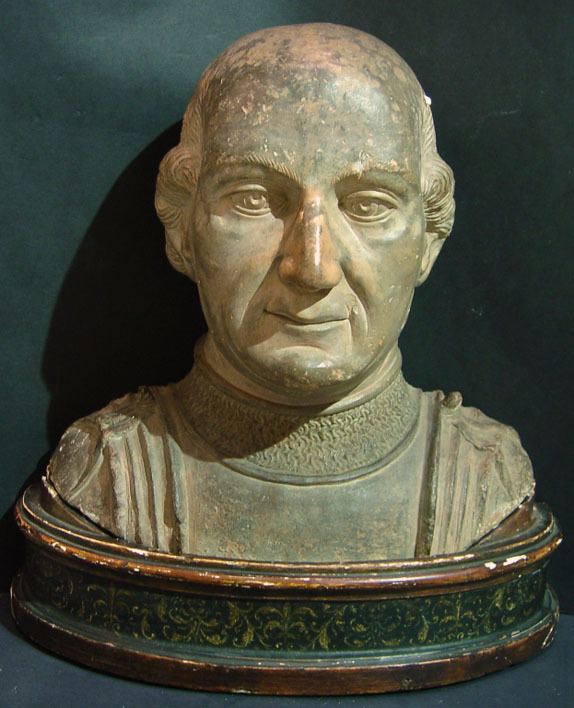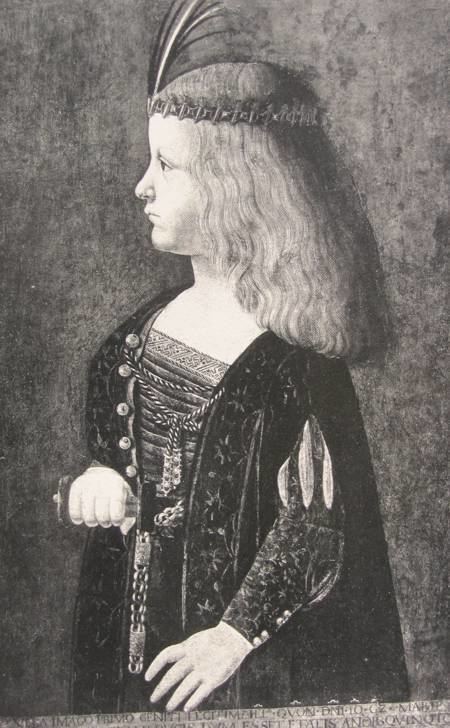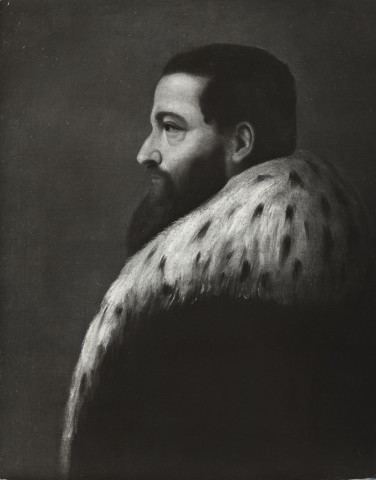Role Condottiero Father Muzio Sforza Parents Muzio Sforza | Mother Lucia da Torsano Siblings Alessandro Sforza Name Francesco Sforza | |
 | ||
Born 23 July 1401San Miniato ( 1401-07-23 ) Children Ludovico Sforza, Galeazzo Maria Sforza, Ippolita Maria Sforza, Ascanio Sforza, Tristano Sforza, Polidoro Sforza Similar People | ||
Francesco I Sforza ([franˌtʃesko ˌpriːmo ˈsfɔrtsa]; 23 July 1401 – 8 March 1466) was an Italian condottiero, the founder of the Sforza dynasty in Milan, Italy, and was the fourth Duke of Milan from 1450 until his death. He was the brother of Alessandro, whom he often fought alongside.
Contents

Early life

Francesco Sforza was born in San Miniato, Tuscany, one of the seven illegitimate sons of the condottiero Muzio Sforza and Lucia da Torsano. He spent his childhood in Tricarico (in the modern Basilicata), the marquisate of which he was granted in 1412 by King Ladislaus of Naples. In 1418, he married Polissena Ruffo, a Calabrese noblewoman.
From 1419, he fought alongside his father, soon gaining fame for being able to bend metal bars with his bare hands. He later proved himself to be an expert tactician and very skilled field commander. After the death of his father during the War of L'Aquila, he participated in the Braccio da Montone's final defeat in that campaign; he fought subsequently for the Neapolitan army and then for Pope Martin V and the Duke of Milan, Filippo Maria Visconti. After some successes, he fell in disgrace and was sent to the castle of Mortara as a prisoner de facto. He regained his status after leading an expedition against Lucca.

In 1431, after a period during which he fought again for the Papal States, he led the Milanese army against Venice; the following year the duke's daughter, Bianca Maria, was betrothed to him. Despite these moves, the wary Filippo Maria never ceased to be distrustful of Sforza. The allegiance of mercenary leaders was dependent, of course, on pay; in 1433-1435, Sforza led the Milanese attack on the Papal States, but when he conquered Ancona, in the Marche, he changed sides, obtaining the title of vicar of the city directly from Pope Eugene IV. In 1436-39, he served variously both Florence and Venice.

In 1440, his fiefs in the Kingdom of Naples were occupied by King Alfonso I, and, to recover the situation, Sforza reconciled himself with Filippo Visconti. On 25 October 1441, in Cremona, he could finally marry Bianca Maria. The following year, he allied with René of Anjou, pretender to the throne of Naples, and marched against southern Italy. After some initial setbacks, he defeated the Neapolitan commander Niccolò Piccinino, who had invaded his possessions in Romagna and Marche, through the help of Sigismondo Pandolfo Malatesta (who had married his daughter Polissena) and the Venetians, and could return to Milan.
Sforza later found himself warring against Francesco Piccinino (whom he defeated at the Battle of Montolmo in 1444) and, later, the alliance of Visconti, Eugene IV, and Malatesta, who had allegedly murdered Polissena. With the help of Venice, Sforza was again victorious and, in exchange for abandoning the Venetians, received the title of capitano generale (commander-in-chief) of the Duchy of Milan's armies.
Duke of Milan
After the duke died without a male heir in 1447, fighting broke out to restore the so-called Ambrosian Republic. The name Ambrosian Republic takes its name from St. Ambrose, the patron saint of Milan. Agnese del Maino, his wife's mother, convinced the condottiero who held Pavia to restore it to him.
He also received the seigniory of other cities of the duchy, including Lodi, and started to carefully plan the conquest of the ephemeral republic, allying with William VIII of Montferrat and (again) Venice. In 1450, after years of famine, riots raged in the streets of Milan and the city's senate decided to entrust to him the duchy. Sforza entered the city as Duke on 26 February. It was the first time that such a title was handed over by a lay institution. While the other Italian states gradually recognized Sforza as the legitimate Duke of Milan, he was never able to obtain official investiture from the Holy Roman Emperor. That did not come to the Sforza Dukes until 1494, when Emperor Maximilian formally invested Francesco's son, Ludovico, as Duke of Milan.
Under his rule (which was moderate and skillful), Sforza modernised the city and duchy. He created an efficient system of taxation that generated enormous revenues for the government, his court became a center of Renaissance learning and culture, and the people of Milan grew to love him. In Milan, he founded the Ospedale Maggiore, restored the Palazzo dell'Arengo, and had the Naviglio d'Adda, a channel connecting with the Adda River, built.
During Sforza's reign, Florence was under the command of Cosimo de' Medici and the two rulers became close friends. This friendship eventually manifested in first the Peace of Lodi and then the Italian League, a multi-polar defensive alliance of Italian states that succeeded in stabilising almost all of Italy for its duration. After the peace, Sforza renounced part of the conquests in eastern Lombardy obtained by his condottieri Bartolomeo Colleoni, Ludovico Gonzaga, and Roberto Sanseverino after 1451. As King Alfonso of Naples was among the signatories of the treaty, Sforza also abandoned his long support of the Angevin pretenders to Naples. He also aimed to conquer Genoa, then an Angevin possession; when a revolt broke out there in 1461, he had Spinetta Campofregoso elected as Doge, as his puppet. Sforza occupied Genoa and Savona in 1464.
Sforza was the first European ruler to follow a foreign policy based on the concept of the balance of power, and the first native Italian ruler to conduct extensive diplomacy outside the peninsula to counter the power of threatening states such as France. Sforza's policies succeeded in keeping foreign powers from dominating Italian politics for the rest of the century.
Sforza suffered from hydropsy and gout. In 1462, rumours spread that he was dead and a riot exploded in Milan. He however survived for four more years, finally dying in March 1466. He was succeeded as duke by his son, Galeazzo Maria Sforza.
Francesco's successor Ludovico commissioned Leonardo da Vinci to design an equestrian statue as part of a monument to Francesco I Sforza. A clay model of a horse which was to be used as part of the design was completed by Leonardo in 1492 — but the statue was never built. In 1999 the horse alone was cast from Leonardo's original designs in bronze and placed in Milan outside the racetrack of Ippodromo del Galoppo.
Culture
Francesco Sforza is mentioned several times in Niccolò Machiavelli's book The Prince; he is generally praised in that work for his ability to hold his country and as a warning to a prince not to use mercenary troops.
He was a moderate patron of the arts. The main humanist of his court was the writer Francesco Filelfo. His best works were mentioned in chapters 7,12, and 14.
Issue
Francesco Sforza with his second wife Bianca Maria Visconti had nine children, seven sons and two daughters:
